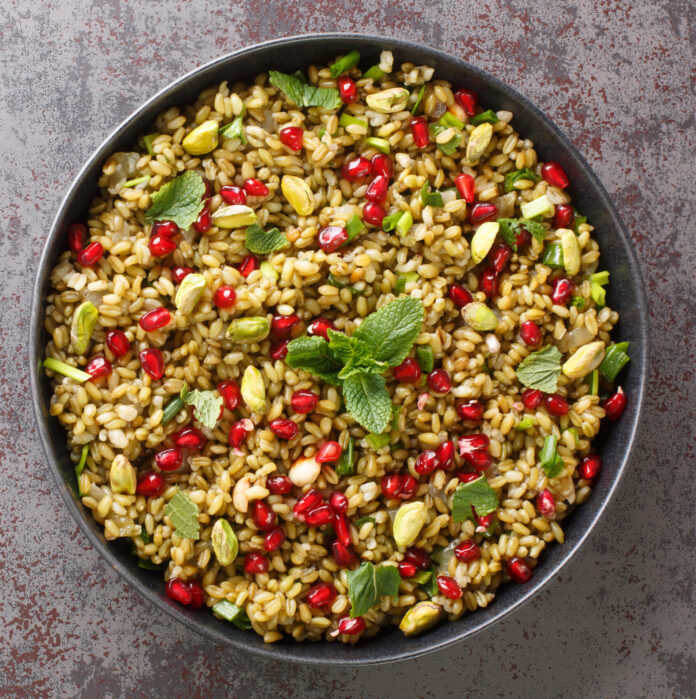In our culinary journeys, we often encounter treasures that not only delight our taste buds but are also incredibly nourishing, low-calorie, and have captivating histories. Sounds like a lot to look for in just one food, right? But freekeh, a cereal food rooted in Levantine and North African cuisines, checks all these boxes. Here’s what you absolutely need to know about it.
Unique Processing
Derived from green durum wheat, freekeh undergoes a unique process, ensuring a distinctive flavor. Harvested while still green, the seeds are sun-dried, then roasted in piles. A controlled fire burns only the straw and chaff, leaving the high-moisture seeds intact. Rubbing and sun-drying follow, resulting in cracked, bulgur-like grains. Fun fact: the name ‘freekeh’ name comes from the word farīk, meaning “rubbed.”
Global Presence
From the kitchens of Egypt, featuring dishes like ḥamām bi’l-ferīk (stuffed pigeon), to the aromatic soups of Tunisia and rich pilafs of Jordan, freekeh assumes various roles in culinary narratives worldwide. In Syria, it usually partners with lamb, onion, butter, almonds, and spices. Tunisia and Algeria cherish it in chorba’t frik, a popular tomato-based soup.
Nutritional Abundance
When it comes to nutritional value, freekeh stands tall and is rather similar to other cereal grains, particularly durum wheat. With high protein content (around 15%), dietary fiber, B vitamins, and essential minerals like manganese, freekeh mirrors its durum wheat origin.
Freekeh requires some patience, as its cooking takes about 45 minutes of waiting by the pot, stirring once in a while, and occasionally adding more water. But its rich taste and nourishing components are totally worth the wait.







